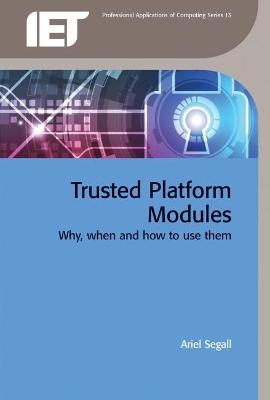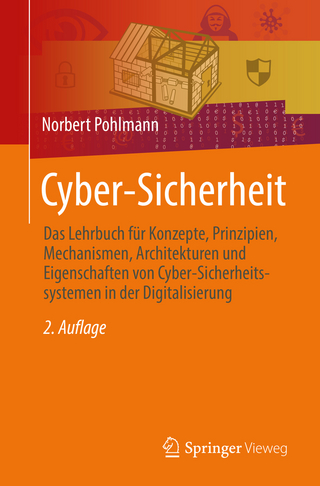
Trusted Platform Modules
Institution of Engineering and Technology (Verlag)
978-1-84919-893-6 (ISBN)
Trusted Platform Modules (TPMs) are small, inexpensive chips which provide a limited set of security functions. They are most commonly found as a motherboard component on laptops and desktops aimed at the corporate or government markets, but can also be found on many consumer-grade machines and servers, or purchased as independent components. Their role is to serve as a Root of Trust - a highly trusted component from which we can bootstrap trust in other parts of a system. TPMs are most useful for three kinds of tasks: remotely identifying a machine, or machine authentication; providing hardware protection of secrets, or data protection; and providing verifiable evidence about a machine's state, or attestation.
This book describes the primary uses for TPMs, and practical considerations such as when TPMs can and should be used, when they shouldn't be, what advantages they provide, and how to actually make use of them, with use cases and worked examples of how to implement these use cases on a real system. Topics covered include when to use a TPM; TPM concepts and functionality; programming introduction; provisioning: getting the TPM ready to use; first steps: TPM keys; machine authentication; data protection; attestation; other TPM features; software and specifications; and troubleshooting. Appendices contain basic cryptographic concepts; command equivalence and requirements charts; and complete code samples.
Ariel Segall has been working professionally with trusted computing technologies since graduating from MIT in 2004. She spent more than a decade at the MITRE corporation researching and implementing a wide variety of secure system designs built on TPMs and related technologies, aimed at both government and enterprise use cases. Ariel was an active contributor in the Trusted Computing Group and primary specification author for their Virtualization Working Group for several years, and has taught multiple courses on TPMs and related topics. She is currently working as a security architect and trusted computing expert at Akamai Technologies.
Chapter 1: Introduction
Chapter 2: When to use a TPM
Chapter 3: TPM concepts and functionality
Chapter 4: Programming introduction
Chapter 5: Provisioning: getting the TPM ready to use
Chapter 6: First steps: TPM keys
Chapter 7: Machine authentication
Chapter 8: Data protection
Chapter 9: Attestation
Chapter 10: Other TPM features
Chapter 11: Software, specifications, and more: Where to find other TPM resource
Chapter 12: Troubleshooting
Chapter 13: Conclusion and review
Appendix A: Basic cryptographic concepts
Appendix B: Command equivalence and requirements charts
Appendix C:Complete code samples
| Reihe/Serie | Computing and Networks |
|---|---|
| Verlagsort | Stevenage |
| Sprache | englisch |
| Maße | 156 x 234 mm |
| Themenwelt | Informatik ► Netzwerke ► Sicherheit / Firewall |
| Informatik ► Theorie / Studium ► Kryptologie | |
| Informatik ► Weitere Themen ► Smartphones / Tablets | |
| ISBN-10 | 1-84919-893-4 / 1849198934 |
| ISBN-13 | 978-1-84919-893-6 / 9781849198936 |
| Zustand | Neuware |
| Haben Sie eine Frage zum Produkt? |
aus dem Bereich


